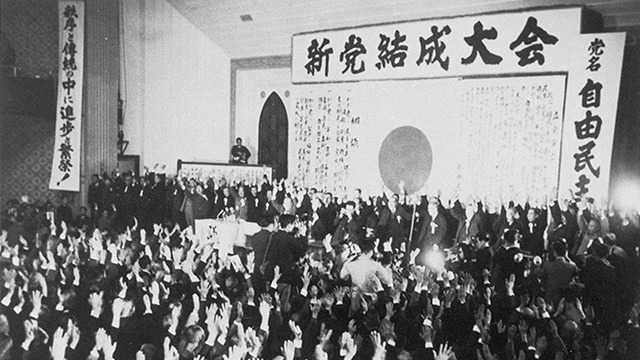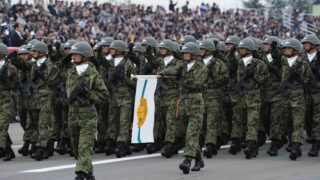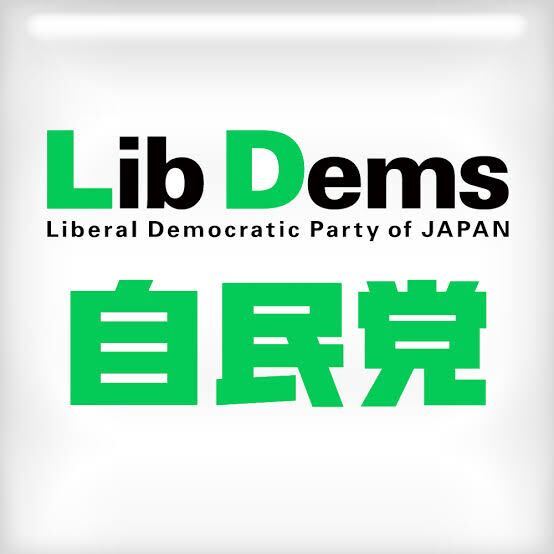Dominating Politics Since 1955
Modern-day Japan is without a doubt a democratic nation, with free elections and a peaceful transition of power both guaranteed and swiftly implemented.
That being said, a conspicuous characteristic of Japanese politics is the fact that it is mainly ruled by one dominant party: the Liberal Democratic Party (LDP) commonly known as “Jimin-Tou” among the Japanese constituents.
As a conservative political party, the LDP was founded in 1955 by merging the Liberal Party and Democratic Party in order to counterbalance the leftist Socialist Party.
 The founding ceremony in 1955 (photo: LDP)
The founding ceremony in 1955 (photo: LDP)
Since its establishment, the LDP has remained in power throughout most of the postwar period with only two occasions of regime change – the first time in 1993 to the Socialists and the second in 2009 to the Democratic Party of Japan (DPJ).
Nevertheless, both power transfers were short-lived, with the LDP regaining its position in a few years. As a result, the LDP has maintained its seat of governance for nearly 64 years out of 78 years of postwar politics.
To set the record straight, the LDP is far from a dictatorship with its dominance being the outcome of fair democratic elections, not through oppression or abusive methods, albeit bribery and corruption were rampant during certain periods.
The Only Realistic Choice
So, the real question is “why do people vote for the LDP?”
Well, one can point out the fact that past attempts for regime change, one in 1993 and the other in 2009, both failed miserably due to internal strife, mismanagement, and failed promises.
The former was a coalition of eight parties, mainly led by the Socialist Party, but disintegrated in less than nine months. Though politically significant, electoral reform was the only accomplishment made by this non-LDP government, and it soon became aware to the public that the ragtag coalition was less than capable of running a country.

The second attempt in 2009 turned out in a similar manner, though the DPJ managed to update the non-LDP record to three years.
On the surface, the DPJ seemed like one unified party. But in reality, it was a merged product of various political parties, ranging from socialist remnants to hardline conservatives who broke off from the LDP.
Along with inexperience, the DPJ government faced the same predicaments as their predecessor – internal disputes and failure to deliver promises as a result of it.
The latter was especially fatal since the DPJ had emphasized their “Manifesto” during the general election in an attempt to outdistance the LDP.
Although it is notable that DPJ policies were struck by an unprecedented misfortune, the Great East Japan Earthquake of 2011 and the subsequent Fukushima nuclear disaster, what followed after a brief period of solidarity was the usual sight of infighting.
Such complacent attitude during a time of crisis not only exacerbated the sense of disappointment, but appeared as sheer incompetence in the eyes of the people.
As such, the DPJ went through three prime ministers in just three years, eventually returning power back to the LDP in late 2012 – at the time led by Shinzo Abe who would later hold the record for his longest tenure as prime minister.
These debacles not only carved the impression that non-LDP parties lacked political viability, but also discouraged constituents from taking another shot at regime change.








-320x180.jpg)











Comments